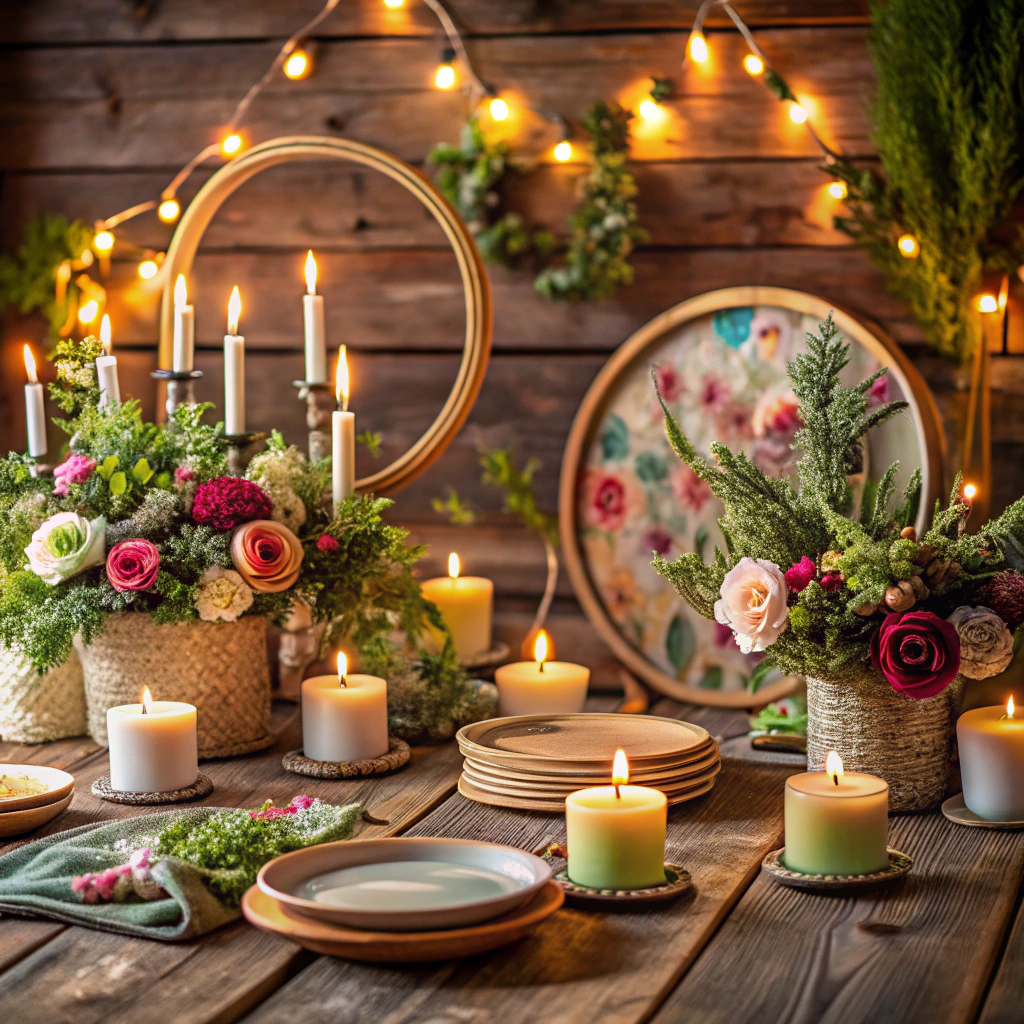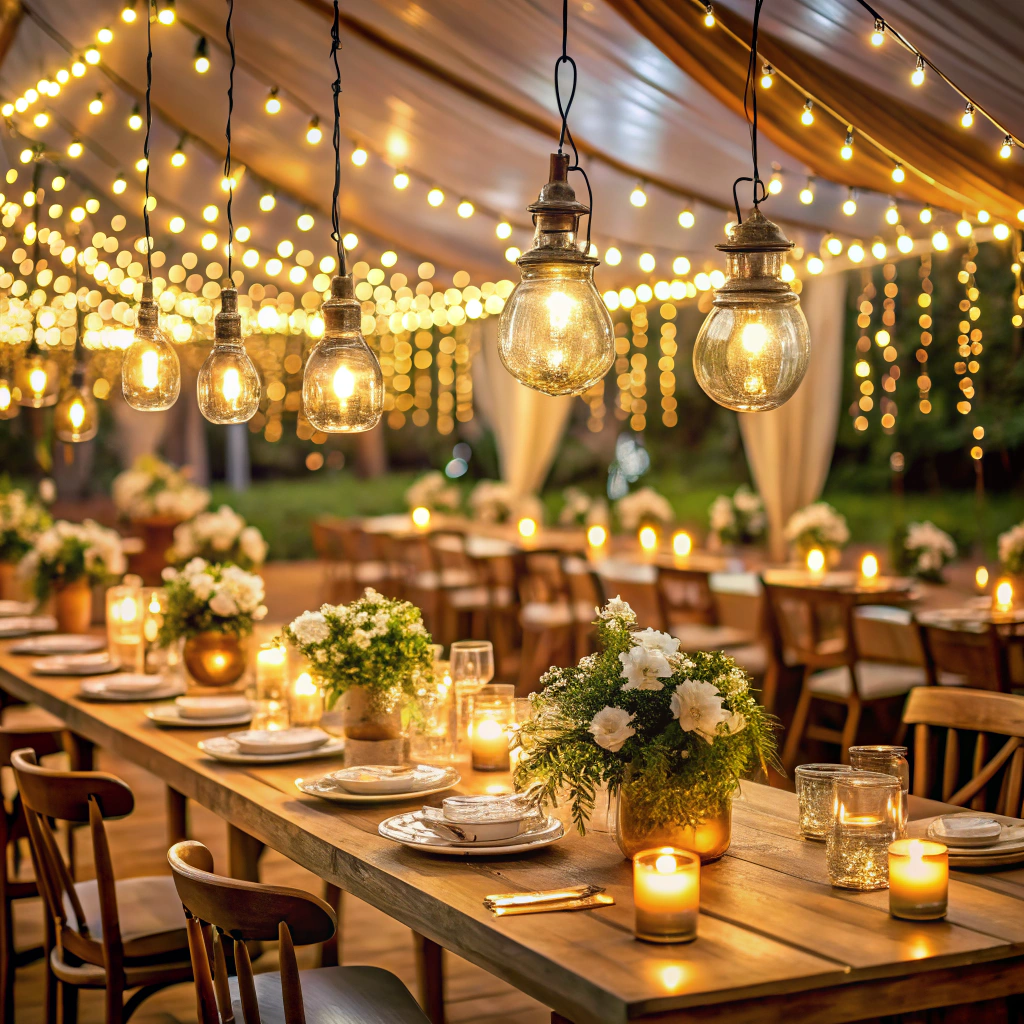Last updated on
Understanding the costs associated with custom closets becomes essential because it allows individuals to design storage solutions that fit both their space and budget perfectly.
Key takeaways:
- Custom closet costs are influenced by dimensions, type, material, brand, and location.
- Closet size affects the price, larger closets cost more.
- Walk-in closets are luxurious and expensive, reach-in closets are practical and affordable.
- Material choices include melamine, wood, plywood, wire, glass, and metal accents.
- Brand choice affects the price, luxury brands are more expensive.
Factors in Calculating Custom Closet Cost
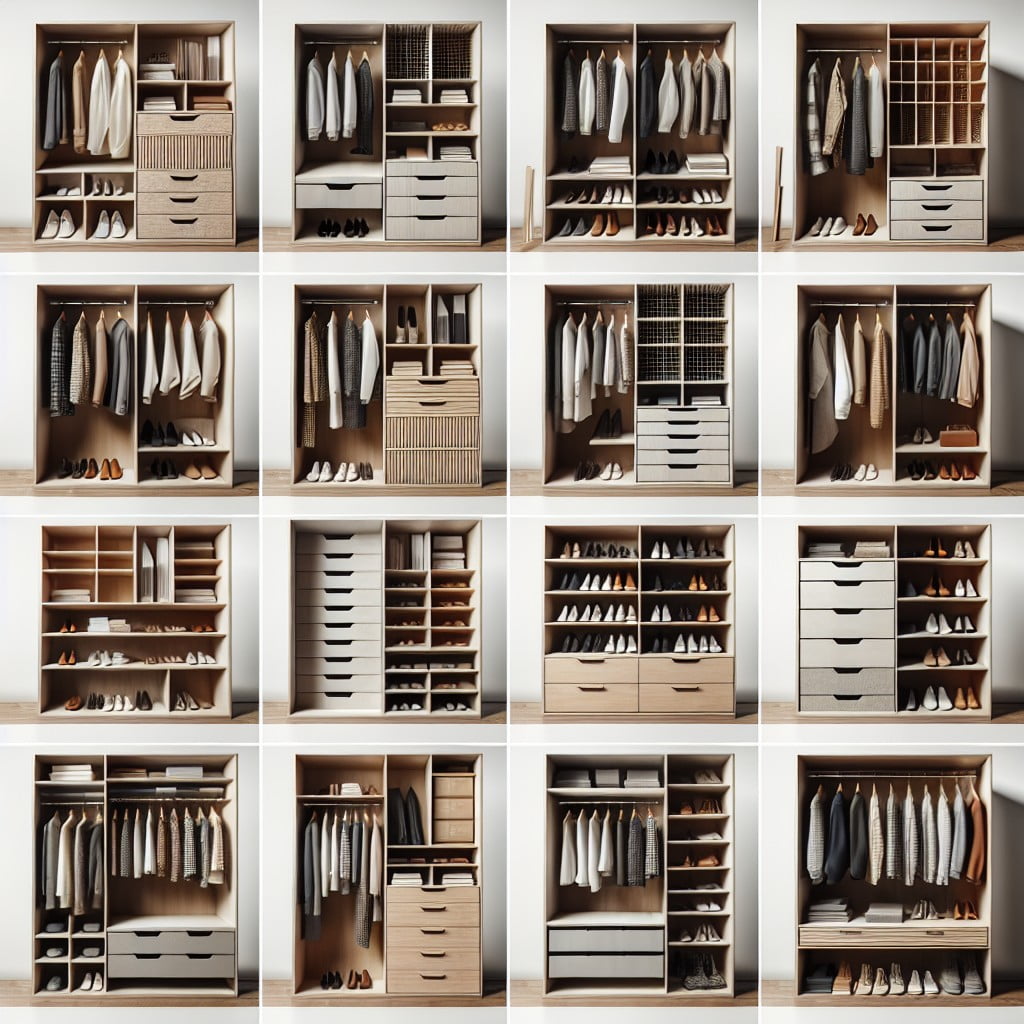
Determining the price of a custom closet involves several variables. The dimensions of the space will significantly influence the overall cost; larger closets require more materials and labor. The type of closet desired, whether it’s a simple reach-in or a lavish walk-in, also affects pricing. Material selection, from melamine to high-end woods, will alter the budget according to quality and durability.
Brand choice can also play a role; established luxury brands may offer exclusive features at a premium. Lastly, where you live can impact the price, as labor and material costs vary by region. Each of these factors should be considered to get an accurate custom closet quote that aligns with personal preferences and financial plan.
Closet Size
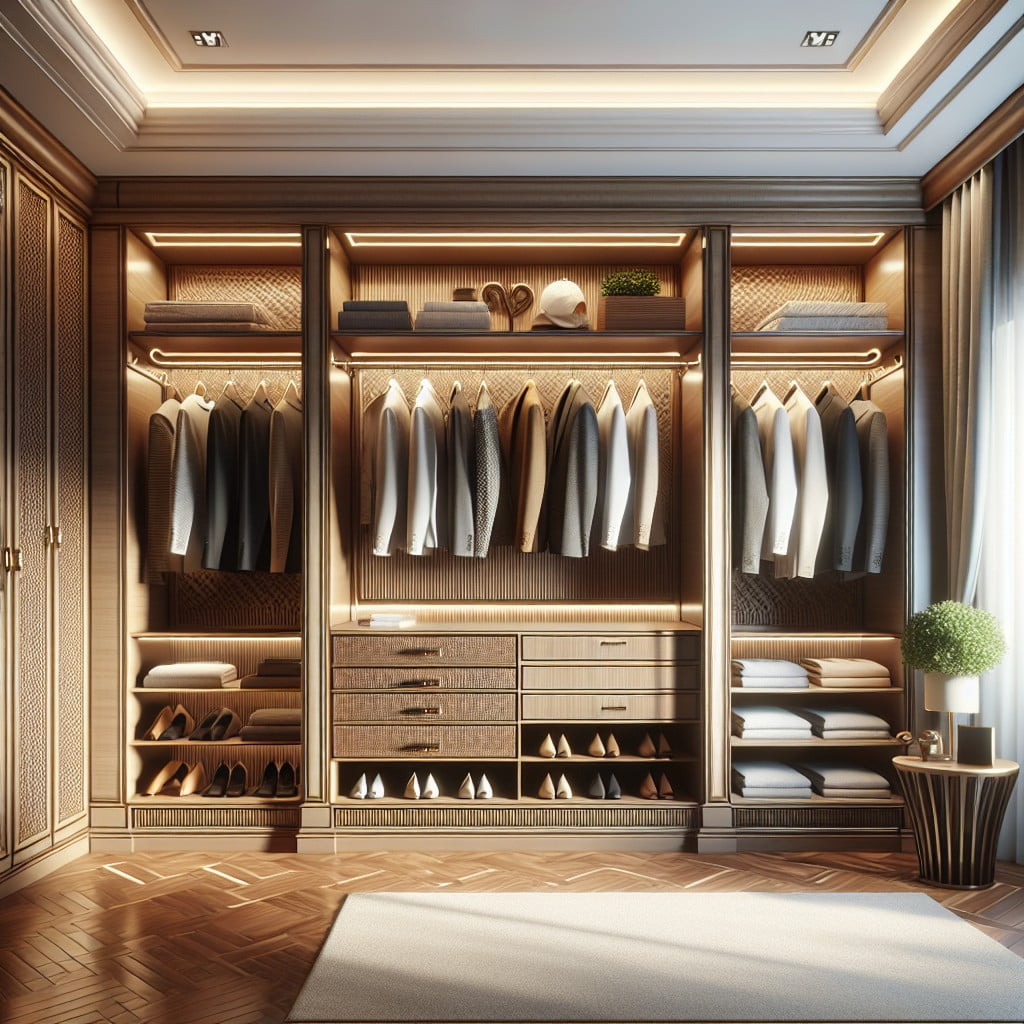
The dimensions of your space directly influence the final price. Smaller closets require less material and labor, making them less expensive than their larger counterparts. Typically, pricing is assessed on a per-square-foot basis, meaning an extensive walk-in will cost more than a modest reach-in setup.
It’s important to measure your available area accurately when considering a custom design so you can estimate potential costs more effectively. Keep in mind, optimizing a smaller space with intelligent design can often yield the storage benefits of a larger closet.
Closet Type
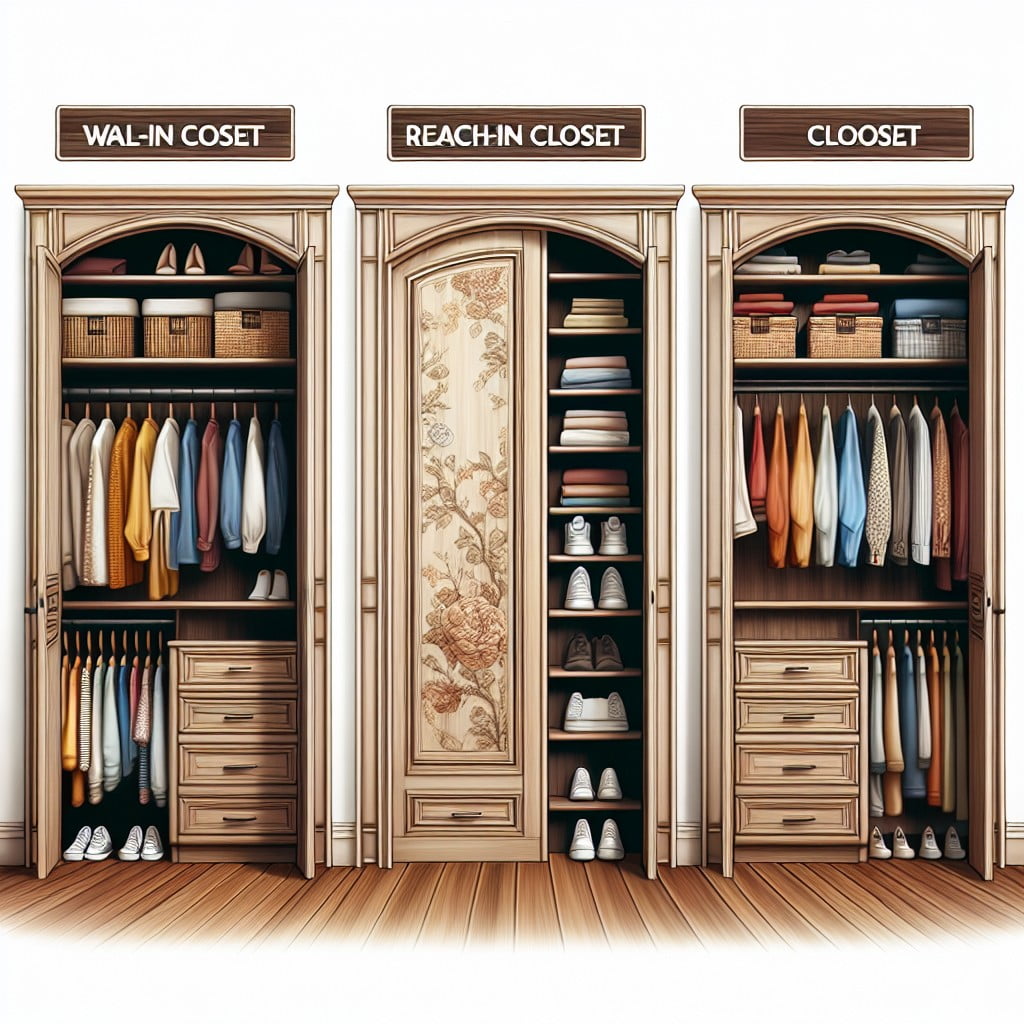
Selecting the right type of closet is essential for both function and cost. Walk-ins offer vast space and the potential for a luxurious dressing area, but are the most expensive. Reach-ins provide a practical solution for smaller rooms and typically cost less due to their reduced size and complexity. Built-ins can maximize room space and may involve custom cabinetry at a variable price point based on design intricacy.
Consider how the intended use and desired aesthetic of the closet align with these options, as the optimal choice will balance practicality with cost-effectiveness.
Closet Material
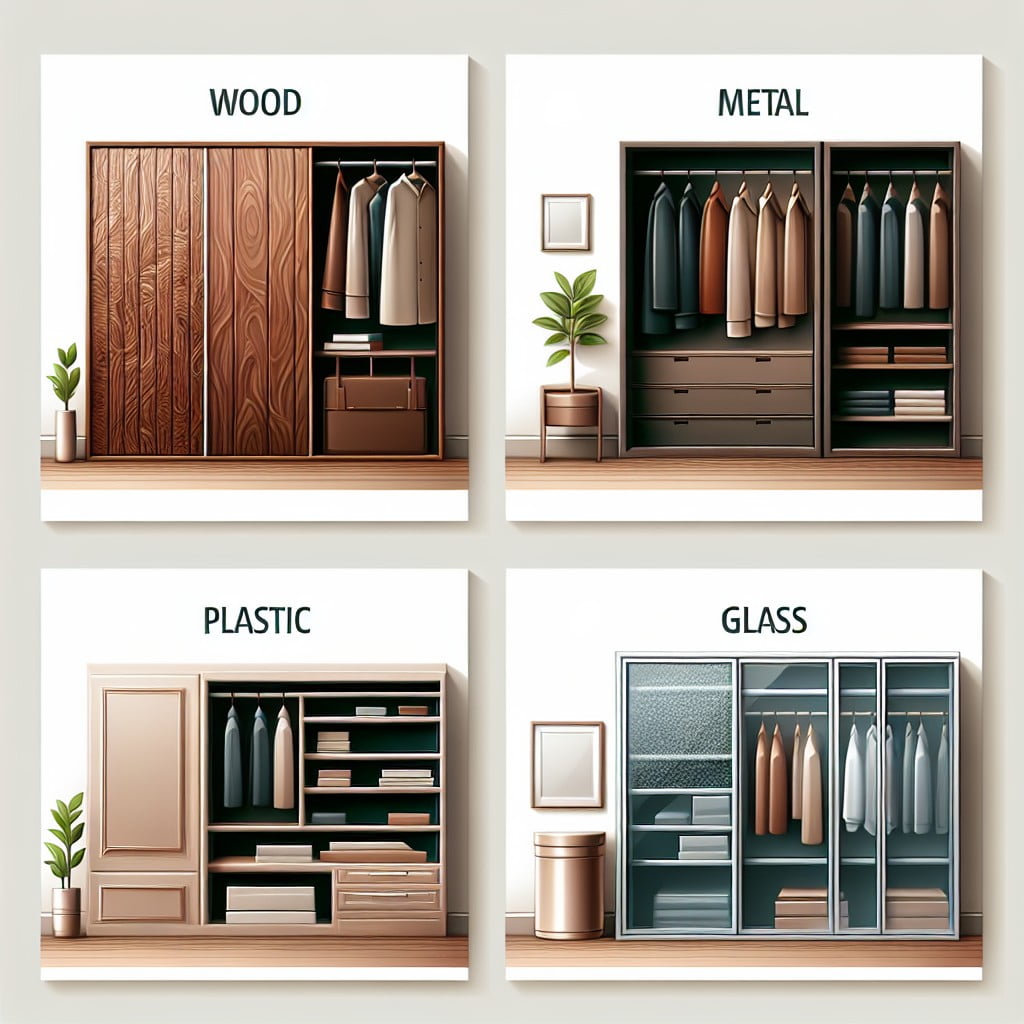
Selecting the right material is crucial as it impacts both the appearance and durability of your custom closet. Common materials include:
- Melamine: Affordable and versatile, melamine is easy to clean and comes in a variety of finishes.
- Solid Wood: Sturdy and classic, solid wood offers longevity but comes with a higher price tag.
- Plywood: Offers a balance between durability and cost, suitable for a range of budgets.
- Wire: A budget-friendly option that provides ventilation for items stored but may limit the aesthetic appeal.
- Glass and Metal Accents: Used to enhance design but may increase the overall cost.
The thickness and grade of these materials also influence the cost. Thicker shelving and high-grade woods, for instance, can drive up the price but are often worth the investment for their strength and appearance. Consider your closet usage to ensure material choices align with your needs and budget.
Closet Brand
Opting for a renowned brand name can notably influence your custom closet’s final expense. These companies, like California Closets or Closets by Design, offer extensive warranties and a broad array of design options that cater to a more upscale market. While they’re associated with quality and durability, they also command a higher price point compared to locally sourced or lesser-known brands.
Conversely, considering smaller, local manufacturers might lead to significant savings. These brands often provide personalized, hands-on service and can be more flexible with pricing. However, it’s crucial to research their reputation, quality of work, and the materials they use. Additionally, assess their warranty offerings, as these can be crucial in the event of any future issues.
It’s also worth noting that some mid-range national brands might strike a balance between cost and quality, offering satisfactory results without breaking the bank. Always compare multiple brand quotes to ensure you’re not only getting a good deal but also quality craftsmanship that meets your expectations.
Geographic Location
The region you live in can significantly impact the price of installing a custom closet. Major cities often come with a higher cost of living, which translates to pricier labor and materials. Conversely, in smaller towns or areas with a lower cost of living, you might find that the same project costs less.
Transportation of materials also plays a role. If you’re located far from suppliers, the additional shipping can add to the total expense. Furthermore, the local market competition affects pricing; areas with numerous closet companies may offer more competitive rates due to the higher competition.
Remember to check local building codes and regulations, as compliance with these could influence your costs. Permits sometimes are required and will add to your budget.
To summarize, always consider the economic factors of your specific location when budgeting for your custom closet project.
Additional Costs and Considerations
Beyond the basic structure, a custom closet may incur additional expenses that should be weighed during the planning phase. Lighting is a key feature, enhancing the functionality and ambiance; this may require professional electrical work, which varies in cost.
The inclusion of elegant accessories like drawer dividers, shoe racks, or pull-out baskets can further personalize the space, though these do carry their own price tags. Decor elements like mirrors or seating could complement the design, adding to the overall budget.
Keep in mind, any structural changes, such as moving walls, will also impact the project’s final cost. It’s important to consider these potential expenses to ensure the final design meets both your needs and your financial plan.
Lighting and Electrical Work
Incorporating lighting into your custom closet design enhances visibility and adds an ambiance that elevates the space’s appeal. Options include recessed LED lights, motion-sensor lights, or a central fixture, all of which come at varying costs.
Keep in mind that professional electrical work is crucial for safety and functionality, potentially adding to the overall expense. Hiring a certified electrician to wire your closet properly can prevent hazards and ensure your lighting choice is both practical and aesthetically pleasing.
Dimmers and automated switches are also popular features that offer control over the intensity and conservation of energy, although they may increase the cost. It’s wise to discuss these elements with your designer early in the planning stage to get an accurate quote and avoid any surprise expenses later on.
Accessories and Decor
Accessories and decor elevate custom closets from purely functional spaces to personal style statements. Factors that influence additional costs include:
- Drawer dividers and inserts for meticulous organization of jewelry, ties, or undergarments.
- Pull-out baskets made from wire or fabric which help to categorize and store items like scarves or workout clothes.
- Specialty racks, such as sliding belt, tie, or pant racks, offer easy access and prevent items from wrinkling.
- Illumination options like LED strip lights could add visibility and ambiance but require professional electrical work.
- Glass-front drawer faces and decorative hardware can enhance the aesthetics but may increase overall expenses.
Intelligent selection of these elements can provide both convenience and a touch of personal flair without drastically inflating the project’s budget. Consider the practical benefits of each feature against its cost to determine the best fit for your needs and financial plan.
Types of Custom Closets
Walk-in closets provide ample space for a comprehensive wardrobe, often incorporating islands or benches in addition to hanging rods and shelves. They are a luxurious option suited for larger spaces.
Reach-in closets are typically found in smaller bedrooms or hallways. They offer efficient storage within a confined space and can often be upgraded with a variety of organizational tools such as double hang sections or pull-out bins.
Built-in closets are integrated into the room’s existing layout, maximizing storage with a sleek and cohesive look. They can be customized to fit under stairs or in irregularly shaped areas, utilizing every inch of available space.
FAQ
How much should I budget for custom closet?
For an average-sized walk-in closet with a basic design, budgeting should start around $2,000, although most individuals end up spending approximately $3,500, with prices potentially increasing up to around $5,000 for systems with additional features and elaborate designs.
Are custom closets worth it?
Custom closets, known for enhancing the functionality and aesthetics of living spaces, add significant value to homes and are therefore, worth the investment.
Do custom closets add value?
Custom closets do add value to a home, with an average return on investment of approximately 56%, potentially increasing the home’s value by roughly $2,000.
Why are closets so expensive?
Closets, particularly custom ones, can be expensive due to the significant cost of labor involved in their construction and design, with average hourly rates ranging from $50 to $100.
What factors contribute to the cost variation in custom closets?
The cost variation in custom closets is influenced by factors such as the closet’s size, material, design complexity, and any additional features or hardware.
How long does it typically take to install a custom closet?
The installation of a custom closet typically takes between one and three days, depending on the complexity and size of the design.
Can quality be compromised for a cheaper custom closet?
Yes, opting for a cheaper custom closet can sometimes mean compromising on the quality of materials and workmanship.
Recap:
